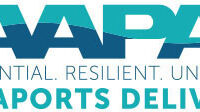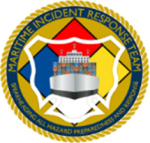Preparing for an Extreme Weather World

In the decades ahead, sizzling daytime temperatures likely will force ports to provide outdoor workers with cooling stations and lengthy breaks throughout the day, slowing down operations and driving up energy costs. On the hottest days, some ports might have no choice but to shut down operations during the afternoon, saving their manpower for the cooler morning and evening hours.
Unfortunately, that’s just one of the many ways climate change will affect port operations as sea levels rise, temperatures increase, and extreme weather events intensify over the next century, according to Jasper Verschuur, a postdoctoral researcher at the University of Oxford’s Environmental Change Institute.
In a 2023 paper published in the journal Nature, Verschuur and his research team found that 86 percent of the world’s ports are exposed to three or more climatic and geophysical hazards such as hurricanes, earthquakes, flooding, and extreme temperatures. Those threats already have the potential to disrupt more than $81 billion in global trade each year, and that figure is sure to grow as climate change takes hold, Verschuur said.
The data represent a warning signal, yet some ports still lack the “long-term vision” necessary to adapt to climate change, he said.
“What I see is that the first thing on ports’ agenda is decarbonization, and climate change is farther down the list,” Verschuur said.

Ports and their stakeholders are looking at a hefty price tag to harden their facilities against sea-level rise and natural disasters, but even small design changes can be impactful, and they’re not always expensive.
“In order to spread out your investment over time, you have to start the process now,” Verschuur advised. “You need quite a long time horizon for implementation, so it’s really about putting a plan together, and some ports in the U.S. are starting to do that.”
A starting point for port administrators is to conduct a risk and vulnerability assessment based on the best available science, allowing the port to form a list of priorities and effective adaptation responses, according to Regina Asariotis of the UN Conference on Trade and Development. Asariotis, chief of the policy and legislation section of UNCTAD’s Division on Technology and Logistics, said the cost of inaction is too high.
It typically takes years for a port to plan and complete a major infrastructure project, and once finished, that infrastructure is expected to last many decades. That’s why it’s important for ports to analyze their vulnerabilities and begin taking action now, she said.
“The threats are being recognized, but the action is lagging behind,” she said. “If you don’t know the potential impacts your port will face under future conditions, you’re not really able to set priorities for action. It’s really a case of mainstreaming this consideration about the physical risk of climate change into your ordinary port infrastructure planning. We have to accelerate that action to ensure that critical transport infrastructure like ports is climate resilient.”
In addition to their own facilities, port administrators should work with state and federal transportation officials and other stakeholders to identify vulnerabilities surrounding their ports. The roadways and railways leading into and out of a port, and the electrical systems powering operations are of particular concern, said Verschuur, the Oxford researcher.
“In a lot of cases, your vulnerability is not your actual port,” he said. “It’s actually some of the infrastructure in the vicinity that you depend on. That’s where you’ll get your bottleneck.”

Putting Plans into Action
Recognizing the challenges ahead, some ports are taking action. The Port Authority of New York and New Jersey, for example, has invested in early-warning systems for coastal flooding and advanced traffic-monitoring systems to manage events that may disrupt roadway or rail connections, according to spokesman Steve Burns.
Other projects include the installation of deployable flood barriers at the Port Newark Building 111 pump station, and the elevation of the backup generator at the Port Authority administration building, Burns said. Train-signal bungalows have been elevated, flood-proof enclosures around lighting controls have been installed, and the storm-water drainage system has been upgraded.
Superstorm Sandy “reinforced how critical the supply and distribution of power is to port operations, which take on increasing importance as more systems are automated and electrified,” Burns said. “We’re working with utilities to increase capacity while also protecting power-distribution equipment, adding emergency backup power and investing in onsite renewable energy.”
In February 2023, Port Everglades announced that it had been awarded a $32 million grant by the Florida Department of Environmental Protection to mitigate environmental threats from flooding and sea-level rise. The port plans to replace aging bulkheads in the northern part of its facility. The bulkheads will be designed based on a projection of 4.36 feet of sea level rise by 2095, an estimate provided by the U.S. Army Corps of Engineers, according to the port.
Erica Harris, a climate adaptation specialist at the infrastructure consulting firm AECOM, said ports are preparing for climate change in a number of ways. One port recently began building a second story onto the building that houses its critical computer servers, and when that project is finished, that equipment will be moved upstairs to protect it from flooding, she said.
AECOM recently worked with another Southeastern port on plans to replace several berths used for cruise lines, taking projections for sea-level rise into account. The National Ocean Service, part of the National Oceanic and Atmospheric Administration, estimates that sea levels along the U.S. coastline will rise an average of 10 to 12 inches by 2050.

Unless greenhouse-gas emissions fall dramatically, sea levels could rise 3.5 to seven feet by the end of the century, according to the agency’s latest Sea Level Rise Technical Report. What’s more, by 2050, flooding along U.S. coastlines is expected to occur more than 10 times as often as it does today, and it’s likely to be more severe, the report said.
In light of those projections, the port in the Southeast has designed its berths in such a way that they can be “recapped” periodically based on sea levels, Harris said. Adding another layer of construction materials will enable the port to elevate its aprons a little bit at a time instead of building them according to sea-level projections in 2100, which would put ships and berths out of alignment, she said.
“The foundation of that design is built to withstand more pressure, so you can keep capping it to rise with the sea level over time,” she said. “It gives them flexibility. If the projections are too aggressive and sea levels don’t actually rise that quickly in the coming decades, then they don’t have to elevate it as much. You don’t necessarily need to elevate to your end goal in the beginning.”
Rising groundwater resulting from higher sea levels is another concern for ports, Harris said. When groundwater levels are higher, land is less able to absorb rain during major storms and prolonged rainy seasons, which also likely will become more intense due to climate change. Much of the infrastructure that ports depend on is buried underground, so rising groundwater levels could lead to electrical shorts, the corrosion of components and higher costs to replace equipment.
“A lot of that infrastructure hasn’t been hardened, and it wasn’t really designed with the idea of long-term groundwater inundation in mind,” Harris said. “That’s something that a lot of ports on the West Coast and in the Southeast are looking at.”
Providing Resources to Ports
Nicole R. LeBoeuf, assistant administrator for the National Ocean Service, said her agency recognizes the vital role ports play in the U.S. economy, generating $1.5 trillion in economic activity each year and supporting 13 million jobs across the country. That’s why she attended the AAPA POWERS Summit in Tampa, Fla., in January to participate in a panel discussion on sea-level rise.
In her presentation, LeBoeuf pointed to Verschuur’s research, noting that an estimated $122 billion in economic activity is at risk annually due to climate-related impacts. The paper found that large ports in high-income nations face the largest potential financial losses, including the Port of Houston, which could face losses of up to $169 million from natural hazards each year, the highest total in the world.
“Most Americans cannot go a single day without eating, using, or wearing something that’s come through one of our nation’s ports, meaning that ports are too big to fail,” she said. “I would like to help ports make climate change and coastal change as predictable as possible.”
LeBoeuf said she wants port administrators to know about federal resources aimed at bolstering the resilience of U.S. ports. The Infrastructure Investment and Jobs Act earmarked more than $6.5 billion exclusively for ports, with another $27 billion that ports are eligible to apply for. Additionally, the Clean Ports Program creates financial incentives for ports to make resilient infrastructure plans through the Inflation Reduction Act.
Expertise also is available to port administrators online. Last year, the Cybersecurity and Infrastructure Security Agency and the U.S. Army Corps of Engineers released the Marine Transportation System Resilience Assessment Guide and the Infrastructure Resilience Planning Framework. NOAA and the Gulf of Mexico Alliance also developed their Ports Resilience Index, a port-management self-assessment document, she said.
NOAA is the authoritative source for accurate coastal oceanographic and meteorological information, including tides, water levels and currents, LeBoeuf said. That information supports ports’ daily, weekly and monthly operations, but the agency increasingly is using that data to inform its predictions “at climate timescales” in an effort to aid ports’ long-term planning, she said.
LeBoeuf said the agency is seeking feedback from port administrators about whether the resources provided by the agency are useful for ports in addressing climate change, and how those resources can be improved. She also hopes to facilitate the sharing of best practices among ports to minimize the costly and disruptive effects of climate change.
“For the first time in human history, we have information in hand that compels us to plan our infrastructure for conditions we’ve not yet experienced,” LeBoeuf said. “The larger ports are beginning to do this work, and we want to make sure they’re using authoritative NOAA data, but a lot of the smaller ports are potentially going to struggle with figuring out how to plan for their future.
“I want to help to identify those ports and their limitations and see if we can encourage that port-to-port sharing of information. We need to help those smaller ports to level up their game because they’re really important to our supply chain and to our country as well.”




